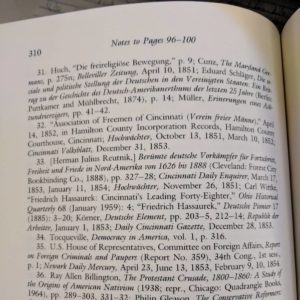When a professor assigns a research paper with no specific prompt, it sometimes can be hard to know exactly what kind of work is expected. Assignments like these may provide a suggested page count and an injunction to stay within the bounds of the course theme, but little else. In this case, the possibilities for paper topics seem infinite. Once you get past this hurdle and settle on a general idea you would like to explore, you still may feel compelled to answer some big questions; questions that might cover a long time frame, seek to identify general trends with a large sample size, or tackle broad theoretical questions. So much of the academic material we are exposed to seems to deal with these “big questions”: survey lectures, assigned readings with titles of sweeping breadth, and the prospect of the senior thesis.
The impulse you may have to ask big questions is natural, then— and it’s a good impulse, too! It is a great way to jumpstart your research, beginning the process of narrowing down by going from infinite potential topics to many potential topics. But, with a looming due date (unfortunately) limiting your research time, keeping your question broad can become overwhelming, and hinder your ability to meaningfully answer it.
During my experience this summer working on an independent research project as an intern with the Office of Undergraduate Research’s ReMatch+ program, I came to learn the importance of narrowing your question early in the research process. Though through the wonderful advice of my ReMatch+ graduate student mentor, my research was pretty specific by midsummer (focusing on the language of “othering” in New York City press reports of a June 1848 Paris workers’ rebellion), it took me several weeks to get to there— necessary time in retrospect, but time I would have rather been developing my topic rather than figuring out what it was. I definitely could have benefited from some guidance at the beginning of my work. So, with that in mind, I hope the tips below will help you narrow your research questions early on, so you don’t have to learn the hard way like I did.
Identify Personal Interest: Even for a required assignment, personal interest should drive your research. In-depth study is more enjoyable if you actually like the materials you are working with, and being personally invested can help keep your motivation up. So, identifying personal interest is the first step towards a specific question. Ask yourself: Which part of a course engaged you most? What readings jumped out at you? Are there interests of yours outside the course that you can integrate into your paper? Hopefully, the answers to these questions will begin narrowing down your potential topics. For further help on identifying personal interest, check our fellow PCUR Ellie Breitfeld’s post here.
Choose Background Reading Wisely: Once you have figured out what you are personally interested in, I would recommend looking at a few relevant survey books (books that cover topics in a broad sense, easily findable with keyword searches on the library website) and reading their introductions and conclusions. Both can be helpful summaries of the book, showing you if it is relevant to your work. They also often have synopses of each chapter, so you can see which may be worth reading. Reading specific chapters is a great start— don’t feel like you need to read every book cover to cover!
Endnotes Are Your Friend: Say you have read some specific chapters, and maybe some journal articles, and you now have a more concrete, narrow question in mind. Where to go for original research? Check out the endnotes to the chapters/articles/books you have read. They can give you a sense of which primary sources you may want to consult, and also a one-stop shopping list of even more specific secondary literature that can help you frame your argument within existing scholarship.

Let Your Question Follow the Sources: If you stick to your initial “big” questions through your source work, you may become frustrated if your sources don’t quite line up with the framework of your question. Be flexible, and adjust your question to available information.
Trust in the Richness of Primary Sources: A single primary source can furnish a surprising amount of info to analyze: when I began my summer intending to study a period from 1848 to 1871, I never expected I would be close-reading newspapers from a single month in 1848! But these sources from the summer of 1848 were so complex, they were worthy of focused study. And, as I learned, don’t be afraid to close-read. Sources yield far more information if you interrogate them beyond the superficial. Close-reading a small number of sources— and the specific questions it brings up— may be more fruitful in a short time frame than chasing hundreds of sources to answer a broader question.
These tips are by no means a suggestion to cut corners, or to totally jettison your “big questions”. In fact, a narrow research focus can be an anchor to a larger, extrapolated argument, and, with due dates ahead, ensure your work is doable and satisfying!
—Alec Israeli, Humanities Correspondent

